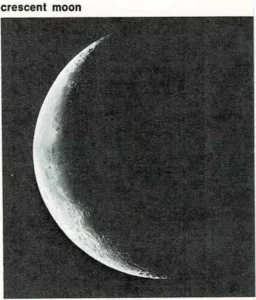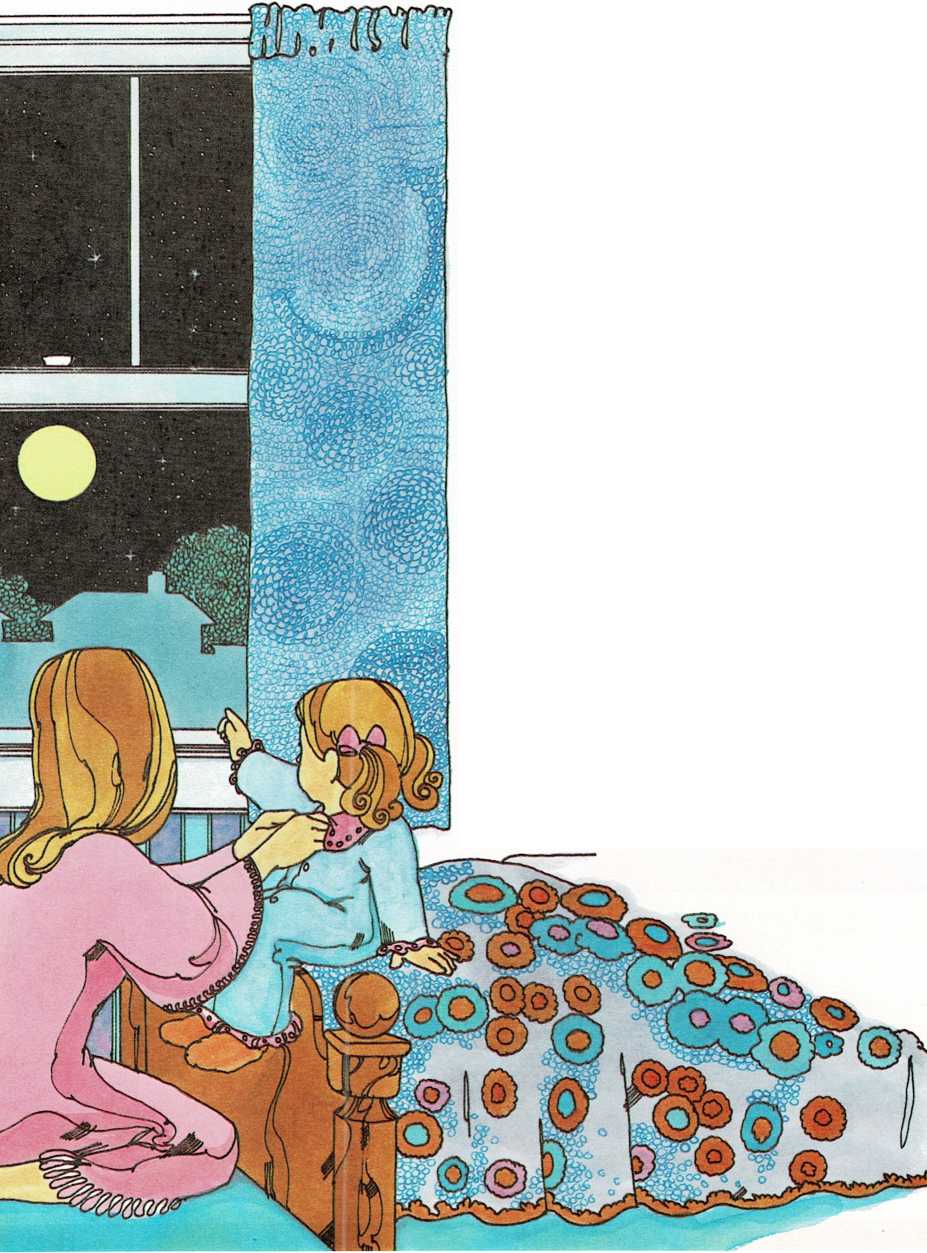
Why the moon “changes”shape
Oh! look at the moon,
She is shining up there;
Oh! mother, she looks
Like a lamp in the air.
Last week she was smaller
And shaped like a bow; But now she’s grown bigger, And round as an 0.
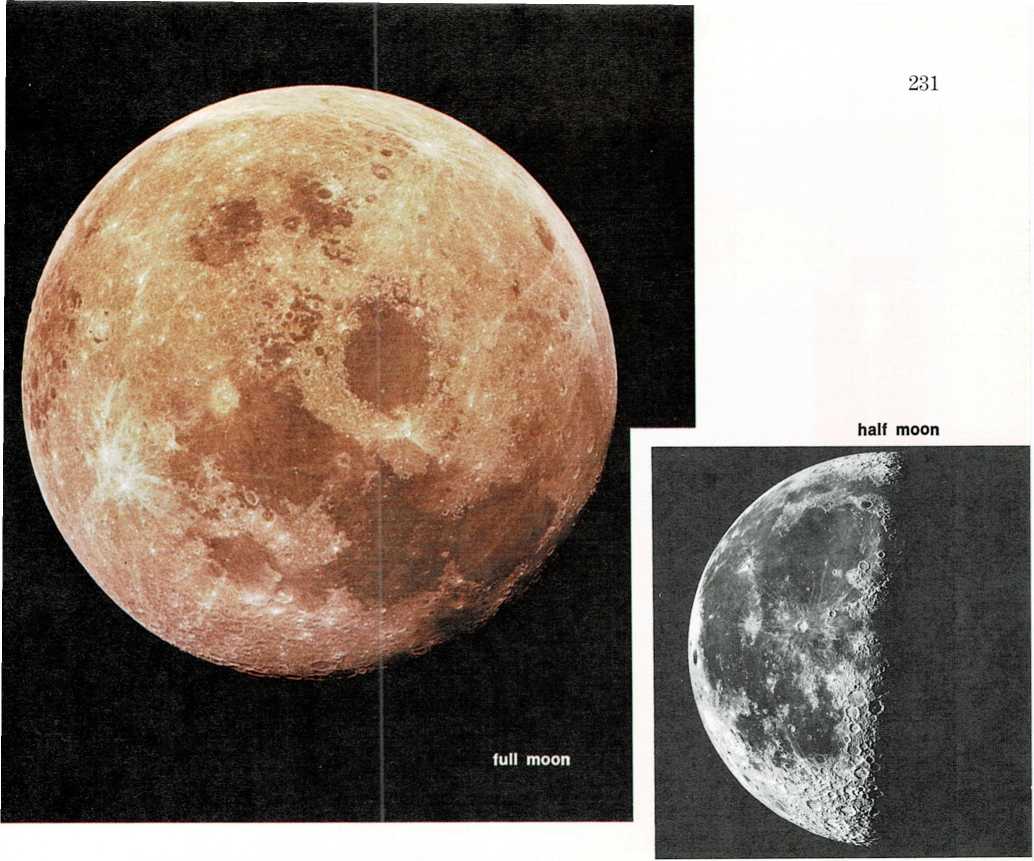
The moon does, indeed, seem to change from a slim bow into a fat, round
0 and back to a bow again. These changes take place as the moon goes
around the earth. We call these changes phases.
In its first phase, the moon can’t be seen at all. It is between the
earth and the sun. The sun shines on the side of the moon that is turned
away from us. Because of this, we can’t see the dark side that faces us.
After a day or two, the moon moves

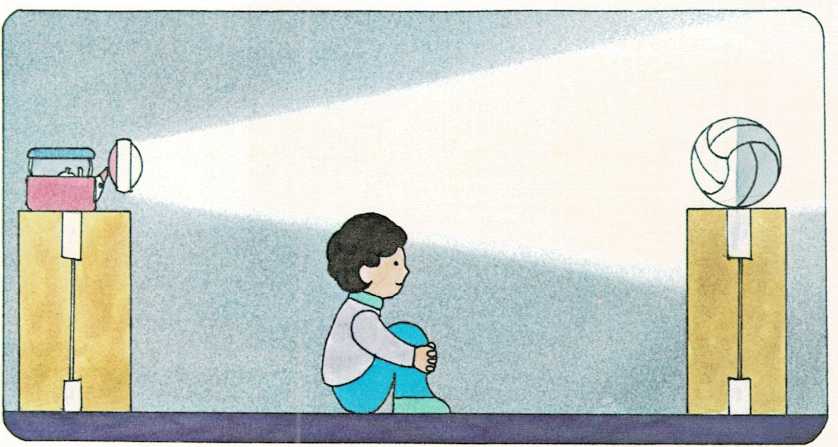
You can see for yourself why the moon has phases. You’ll need a bright
flashlight, a large ball, and a dark room. The flashlight acts as the
sun, the ball is the moon, and you will be the earth.
far enough to one side of us so that we can see a tiny bit of the side
that is lit by the sun. From earth, this tiny bit looks like a silvery
bow. We call this phase a crescent moon.
After seven days, the moon has moved enough so that we can see half of
its sunlit side. This is a half moon.
After about two weeks, the moon is halfway around the earth from where
it started. Now we can see the whole side of the moon the sun shines on.
It is now a bright, round, full moon. As it moves on around the earth it
becomes a half moon, then a bow again. Finally, its dark side is again
turned to us.
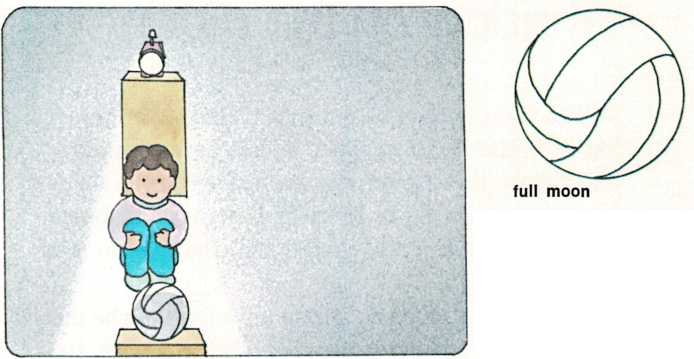
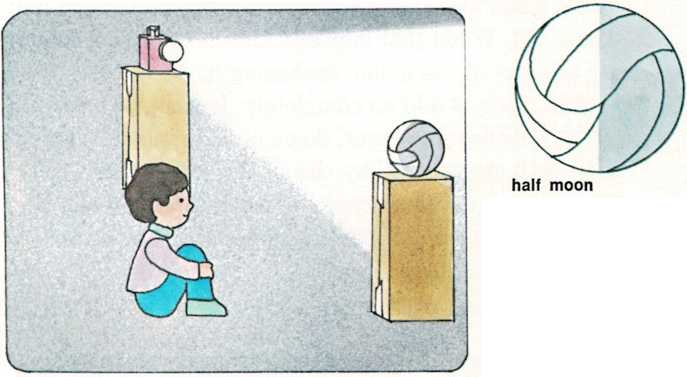
Sit directly between the light and the ball. The whole side of the ball
facing you will be in light, just as a full moon is.
Move the ball to your left. Go back to where you were and face the ball.
Only half the ball will be in the light, like a half moon.
Move the ball nearly between you and the light. Most of the ball will be
in shadow. Only a small part will be lit, like a crescent moon.


